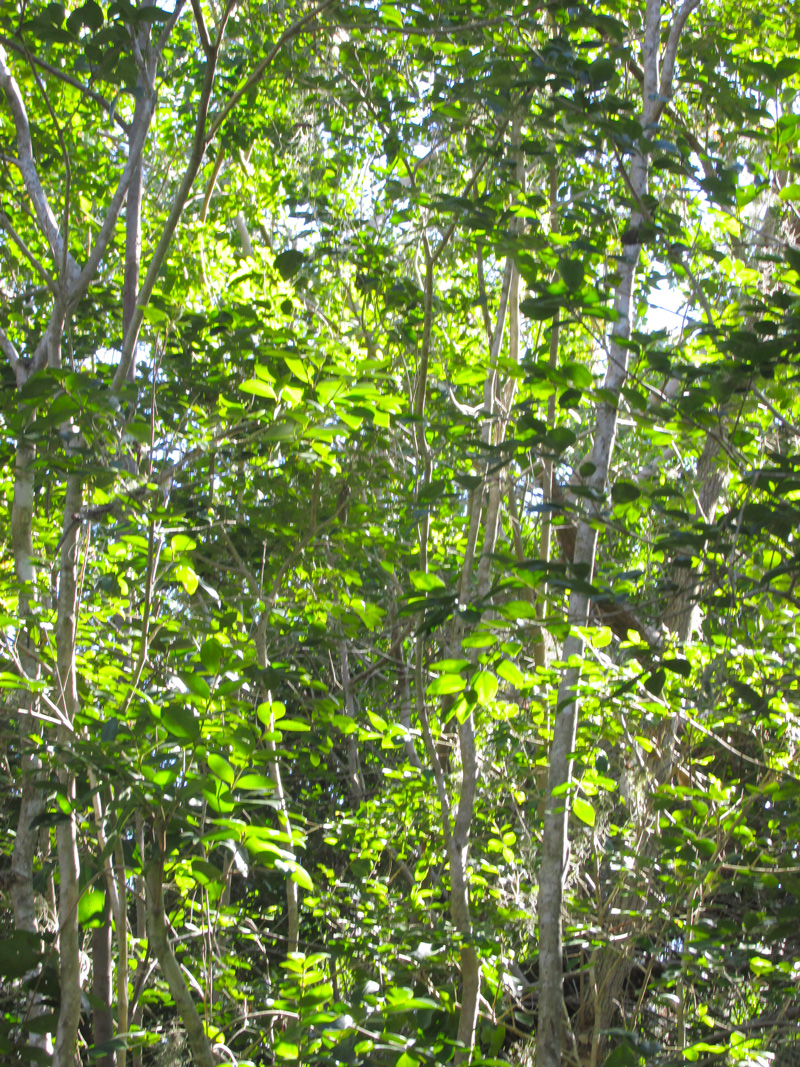
White stopper (Eugenia axillaris) trees grow in a thicket at the north Oslo Riverfront Conservation Area in the low hammock on the way to the coastal wetlands. Stopper may refer to how thickets of these trees (and related species) “stopped” the progress of early explorers or their use medicinally to “stop” diarrhea.
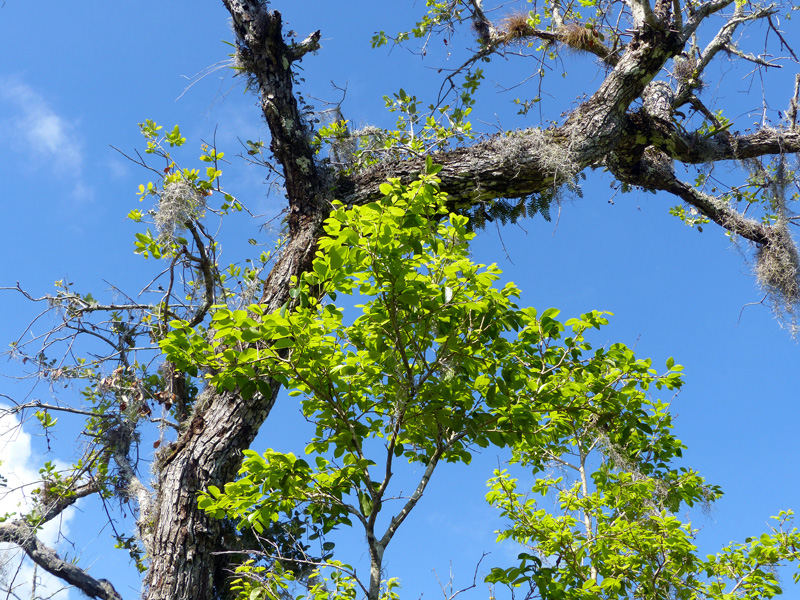
With rising sea levels this area now is periodically inundated. Mature white stoppers are tropical trees and can withstand occasional standing water. Note the decline of the adjacent live oak tree (Quercus virginiana).
Also called skunk tree, white stoppers mysteriously sometimes emit a distinctive musky, some say skunk-like, fragrance. The aroma seems to be most pungent on warm, humid days with light breezes.
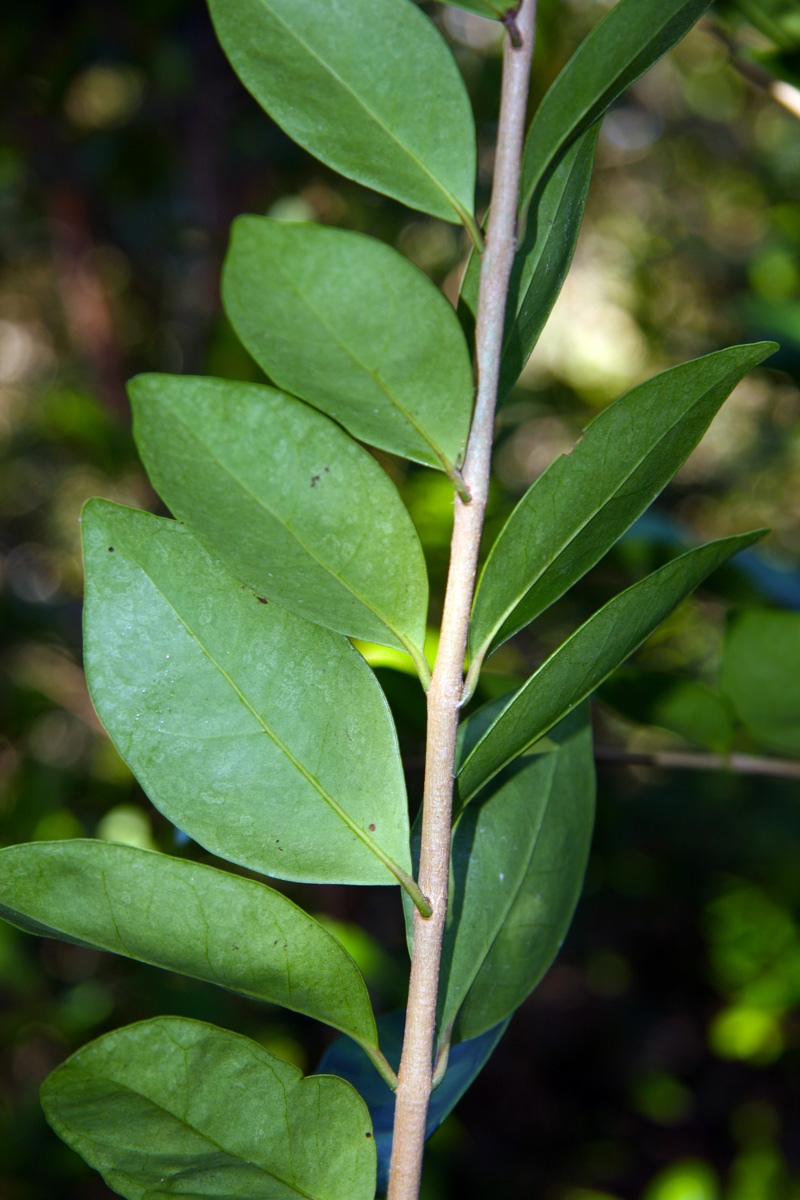
Their opposite leaves are about 2″ long, ovate to elliptic in shape, and have pronounced drip tips, an acuminate (pointed) leaf apex. Mature leaves are marked by random black dots. Note the whitish bark for which the plant is named white stopper.

New foliage often is red or pinkish. The petioles (leafstems) also can be red.
Its fragrant white flowers have 4 petals, many stamens, and are held in the leaf axils. Flowering can occur throughout the year, peaking in the spring and summer.
Fruiting in full sun can be profuse. Fruits ripen from yellowish to red to purple-black. Ripe fruits are edible and said to be sweet. Birds and other wildlife consume and spread them.
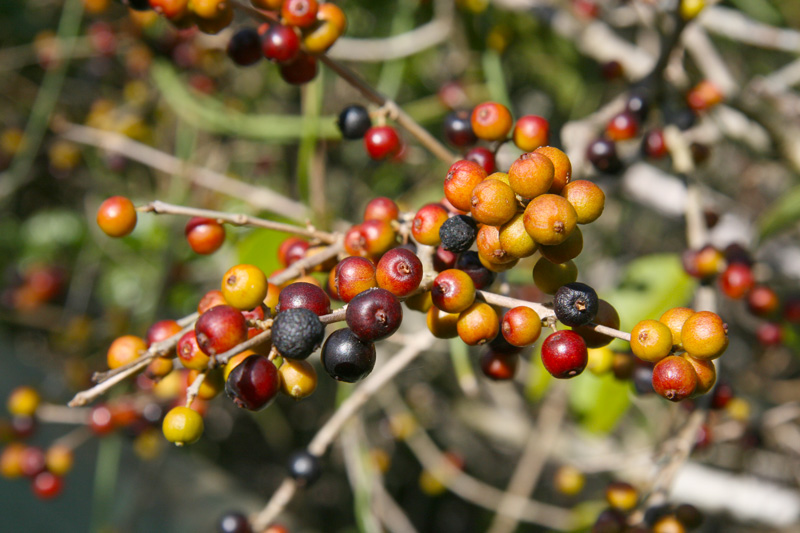
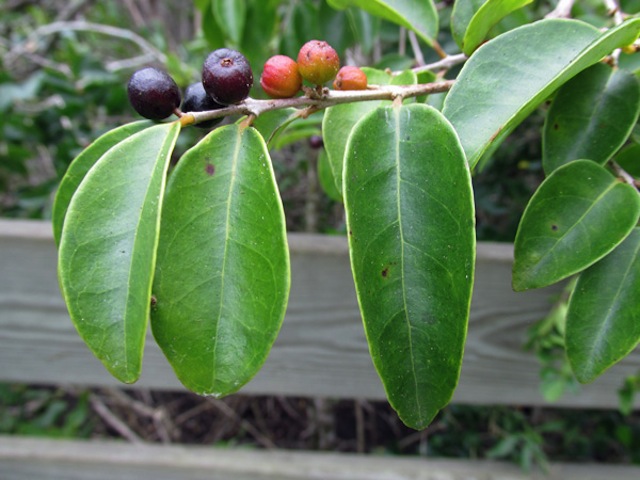
White stopper is a member of the myrtle family, Myrtaceae, and Its leaves have pellucid dots like many members of this family. Forty-two volatile compounds have been isolated from its leaves and likely account for the mysterious musky aroma.
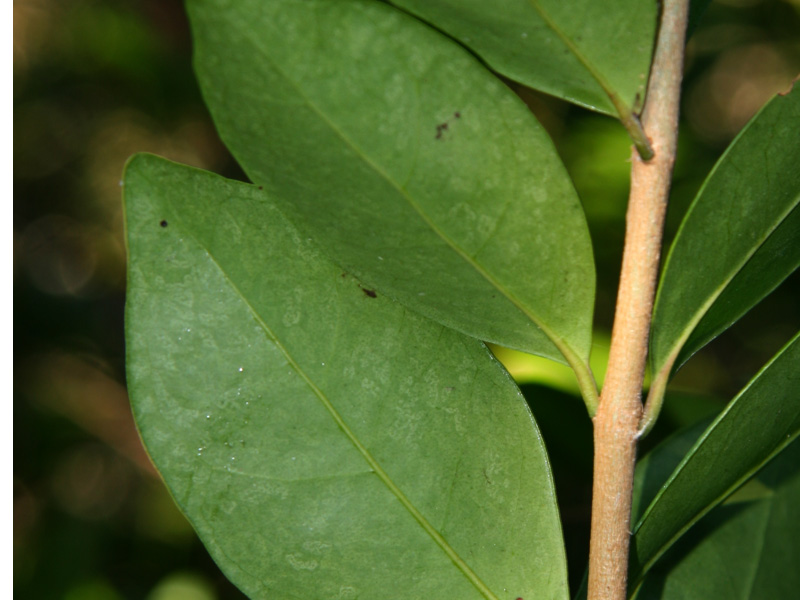
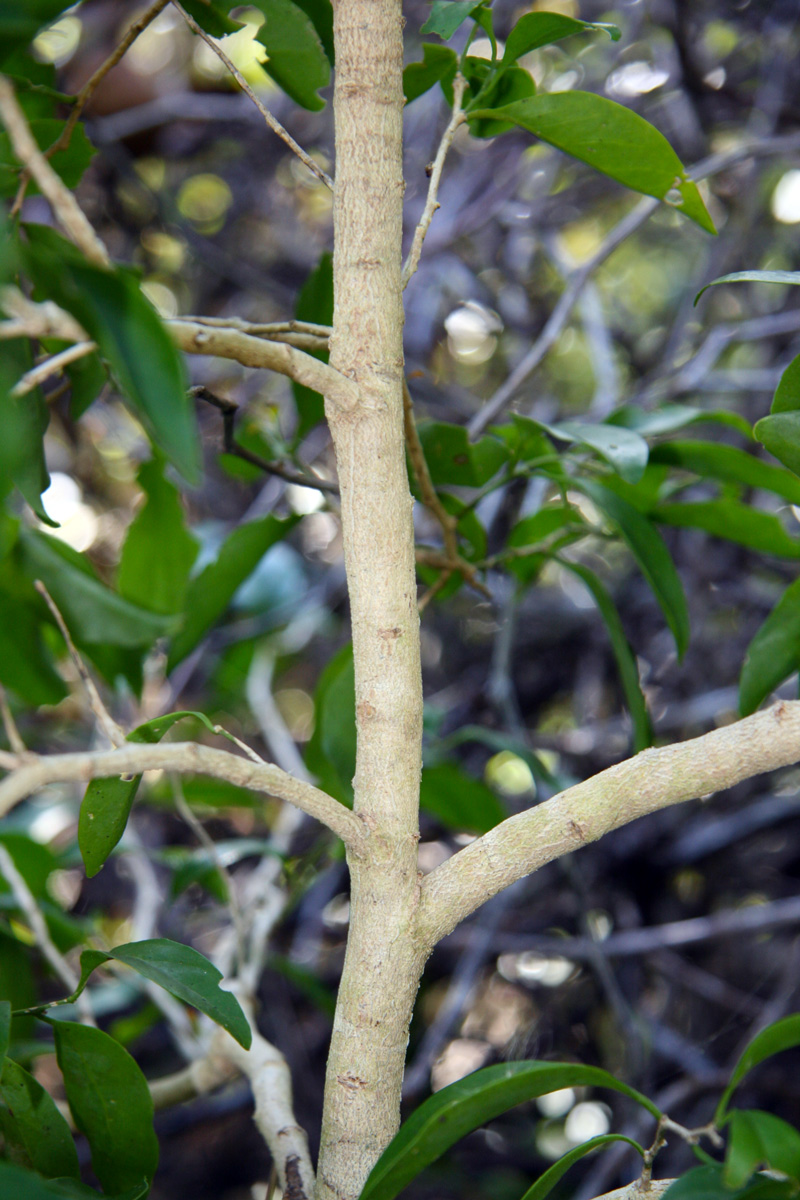
White stoppers grow to be about 20″ tall and, when unpruned, maintain a slender triangular structure. Plant a white stopper in your yard for pollinators, wildlife, and a conversation piece.
